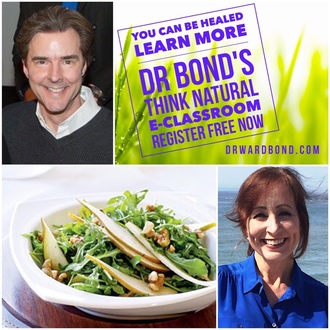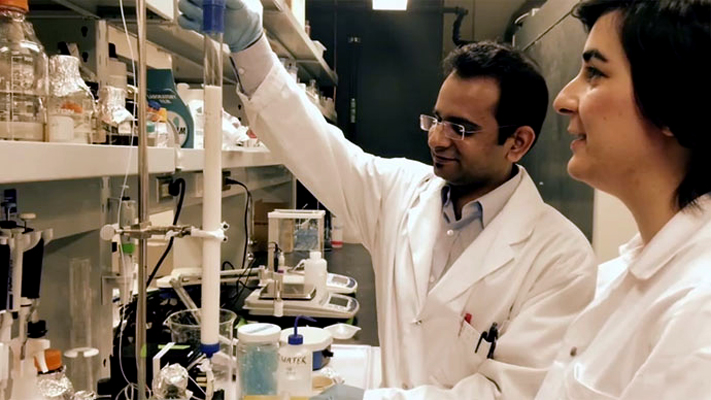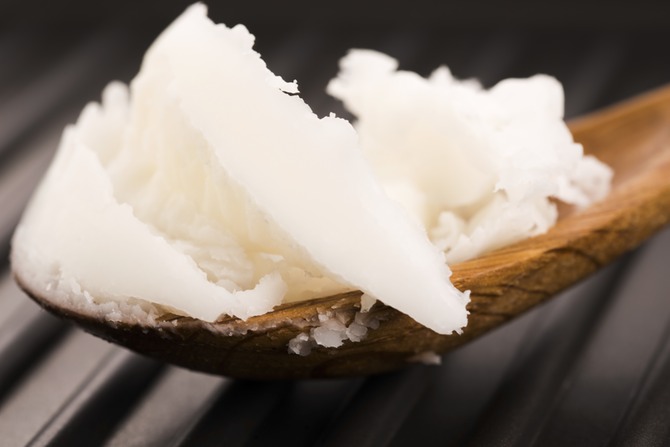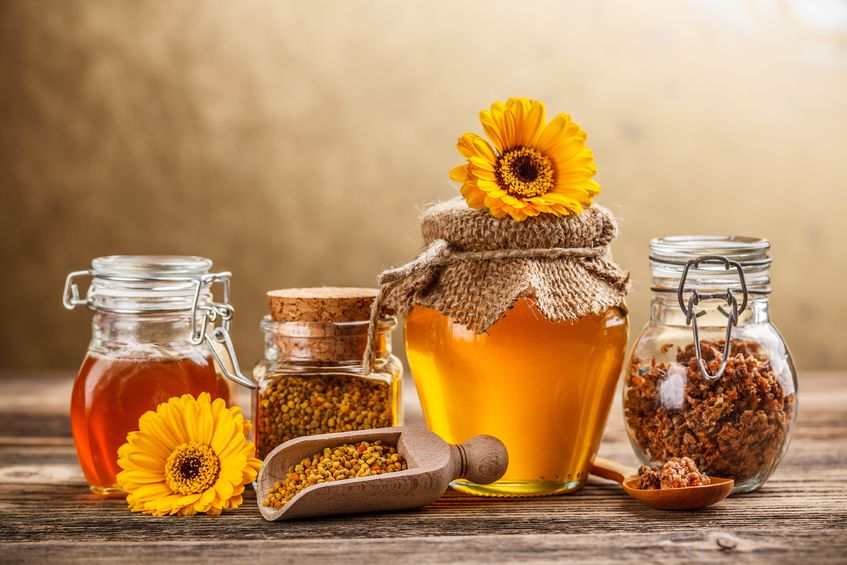|
What is Congestive Heart Failure?
Congestive heart failure means the heart’s pumping action is weaker, but it’s also overcompensating due to possible issues. With heart failure, blood moves through the heart and body at a slower rate, and pressure in the heart increases. As a result, the heart cannot pump enough oxygen and nutrients to meet the body's needs. The chambers of the heart may respond by stretching to hold more blood to pump through the body or by becoming stiff and thickened. The chambers of the heart may respond by stretching to hold more blood to pump through the body or by becoming stiff and thickened. This helps to keep the blood moving, but the heart muscle walls may eventually weaken and become unable to pump as efficiently. As a result, the kidneys may respond by causing the body to retain fluid (water) and salt. If fluid builds up in the arms, legs, ankles, feet, lungs, or other organs, the body becomes congested, and congestive heart failure is the term used to describe the condition. What Causes Congestive Heart Failure There are many causes of this condition and each cause must be treated individually for the best outcome. Blocked arteries, heart attack, alcohol and drug abuse, high blood pressure, diabetes and kidney disease are just a few of the causes of congestive heart failure. What Happens? Let’s use the example of a heart attack. When a heart attack happens and damages part of the heart muscle, that muscle dies. The heart is left with less muscle to give it the power it once had to pump the blood efficiently and effectively. After the heart attack and over time, the heart begins to work harder and overcompensate for the lack of muscular power it once had and congestive heart failure is now on the scene. The heart wears itself out and eventually stops working. The ANSWER to Reversing Congestive Heart Failure Yes, there’s an answer to congestive heart failure. With all the advancements in medical science, improvements for congestive heart failure have not advanced at all and that’s a shame. Drugs don’t improve the condition. The medications given are usually diuretics to pull the fluid off the heart and out of the lungs or beta-blockers to further slow down the heart rate leading to fatigue. It’s a catch-22 that never ends and still medical science has ignored a very important molecule we all need to stay alive. That molecule is called D-ribose. Did you know D-ribose is a healthy nutrient we are all born with and it’s needed for cellular energy and to properly contract and relax our heart and muscles? What many patients do not know is that many of the cardiology hospitals have it in their pharmacies and due to the lack of education of the physicians the patients are missing out on the most profound cure for congestive heart failure. In Experimental and Clinical Cardiology, D-ribose can aid the recovery of ATP levels and, hence, diastolic function. Clinical trials have shown that ribose supplementation improves ischemic threshold and enhances diastolic function in congestive heart failure. What all that technical talk is telling us is the d-ribose improves the contraction of the heart muscle to pump blood efficiently to the rest of the body and relax properly to refill the heart chambers with blood and to pump it out again. “We have compelling, but preliminary, data to suggest that D-ribose may be of benefit in congestive heart failure (CHF). CHF patients commonly experience fatigue, decreased exercise tolerance and limitations in activities, all attributable to their dysfunctional cardiac condition. The preservation of, or improvement in, left ventricular diastolic function has been a therapeutic goal in CHF because of its important relationship to improving functional capacity/exercise performance of daily activities. Conventional pharmacological therapy (diuretics, digoxin, angiotensin-converting enzyme inhibitors, beta-blockers, etc) is initially employed: however, success is not always guaranteed. No standardized secondary pharmaceutical therapy exists and, therefore, novel therapeutic options are being sought.” Exp Clin Cardiol. 2004 Summer; 9(2): 117–118. D-ribose is the backbone of adenosine triphosphate (ATP)—the source for all cellular energy. Ribose is the starting point and the rate limiting compound in the synthesis of these fundamental cellular compounds and the availability of ribose determines the rate at which they can be made by our cells and tissues. (Bioenergy Life Science 2016) What this means is our bodies can’t replace ribose quick enough with our bodies are taxing the supplies on hand. The cells are working as hard as they can to replenish our ribose stores and this is where supplementing with D-ribose can help speed up the process and get the desired results for those who are dealing with congestive heart failure and those in competitive sports. But does it work in a non-clinical setting? You better believe it does! I have personally met and spoken too many who use D-ribose for congestive heart failure and the results are astounding! From patients who could barely walk across the room who are now walking the golf course and riding motorcycles. D-ribose is safe, effective and does not interfere with any types of medications. Many cardiologists are jumping on the D-ribose bandwagon because they see the results before their eyes. There have been a few patients who were on the heart transplant list taken off the list because their heart function became stronger. D-ribose is taken daily in a powder form. The dose is 5 grams twice a day. A dose of 5 grams three times a day can be used safely. I take it myself for healthy heart and muscular function. The overall effect upon the patients is not only improving heart function, but they will also feel more energy, stamina and endurance. This simple 5 carbon sugar is giving heart patients a second more powerful lease on life. For more information on D-ribose go to http://www.bioenergyribose.com
0 Comments
by Ward W. Bond, PhD
One question I get many times is can age-related conditions of the eyes such cataracts, macular degeneration and poor eyesight be reversed naturally? Well, it depends if you’re willing to walk away from a poor diet and give you eyes the nutrition they need. The great news is, it’s never too late to start! So let’s get going! Nutrients for Healthy Eyes
Tanaka J, Kadekaru T, Ogawa K, et al. Maqui berry (Aristotelia chilensis) and the constituent delphinidin glycoside inhibit photoreceptor cell death induced by visible light. Food Chem. 2013 Aug 15;139(1-4):129-37. So let’s go back to the original question. Can age-related eye conditions be reversed? Depends. Cataracts if caught while they are still small, the use of nutrition and carnosine eye drops have shown to stop them in their tracks and reverse them. Macular degeneration can be slowed or stopped when the proper nutrients are taken and the diet correctly to include more healthy foods. When it comes to macular degeneration the nutrients above focused more on the dry form of the disease. If you are suffering with the wet form, add melatonin at night. Studies are showing melatonin can reverse the wet form of macular degeneration. Sugar is the most detrimental to eye health. Sugar is needed to fuel the eyes, but refined sugar will cross link with proteins and lead to damage to the lens and other parts of the eyes. So get the sugar and everything in your diet ending in ‘ose’ out of your diet! You’ll live longer, see better and prevent a host of diseases in the process. Healthy, bright, clear eyes will be the result when you add fruits, vegetables, dark green foods to your daily diet. Add those nuts and seeds for stronger eye muscles. You’ll see your world getting clearer, naturally. We live in a toxic world with poisons coming from our food, water and air. If you think an unhealthy diet can make you sick, think about your environment. With all the factories, pollution from cars and trucks, second hand medications making it into our waterways, it’s no wonder we haven’t killed off all of mankind!
I want to focus on two green nutrients which will help to lessen the toxic load in our body and raise our level of protection on a daily basis. Let’s look at Cilantro and Chlorella. When you talk about toxic heavy metals, mercury is at the top of the list. Normally mercury will be excreted from bowels and urine, but it has a half life is 40years! That’s right you’ll carry mercury in your body for most of your life if you aren’t giving your body cilantro and chlorella on a daily basis. The bowels will excrete 90% of the mercury and the rest will be excreted by the urine. Here’s where it gets tricky. Many health experts are agreeing using cilantro to remove mercury stored in your body works, but while the mercury is being pulled from the deep tissues, it’s not left the building yet. “Cilantro mobilizes more toxins then it can carry out of the body, it may flood the connective tissue (where the nerves reside) with metals, that were previously stored in safer hiding places.” This can cause retoxificaiton if another binding agent isn’t used to help rid the body of the heavy metals that are ‘found’ in their hiding places throughout the body. People who have eaten large salads daily full of cilantro have experienced this effect – moodiness, terrible acne, joint pain and more. While they were mobilizing heavy metals, they weren’t all excreted from the body fast enough, which meant they were detoxing and toxifying themselves the same time!” NaturalSociety.com 2014 Chlorella should be added to everyone’s daily diet as it will bind to toxins in the intestinal tract and prevent them from being reabsorbed. Clinical studies completed recently proved that using cilantro and chlorella can naturally remove an average of 91% of mercury, 87% of lead, and 74% of aluminum from the body naturally. How cool is that? As a side note, chlorella taken after a meal will help to bind toxins that could make you sick later. Let’s compare Cilantro and Chlorella and you’ll soon see how these green twins work together. Cilantro
Chlorella
There you have it. The green detoxifying twins for better health. It's not too late, you have a healthier life waiting on you! Asian News International
03-16-16 Washington D.C., Mar. 15 (ANI): Results of 24 studies have claimed that natural products can be beneficial in the prevention of neurodegenerative diseases, particularly Alzheimer's disease. For the first time real maple syrup was included among the healthful, functional foods that show promise in protecting brain cells against the kind of damage found in Alzheimer's disease. One study presented by Dr. Donald Weaver found that an extract of maple syrup may help prevent the misfolding and clumping of two types of proteins found in brain cells - beta amyloid and tau peptide. When cellular proteins fold improperly and clump together, they accumulate and form the plaque that is involved in the pathogenesis of Alzheimer's and other brain diseases. The other research showed that a pure maple syrup extract prevented the fibrillation of beta amyloid proteins and exerted neuroprotective effects in rodent's microglial brain cells. Scientists have found that a decrease in microglial brain cell function is associated with Alzheimer's disease and other neurological problems. The maple syrup extract also prolonged the lifespan of an Alzheimer's roundworm model in vivo. Alzheimer's disease is a progressive, neurodegenerative disease that impairs daily functioning through gradual loss of memory. Alzheimer's has no current cure, but treatments for symptoms are available and research continues. The studies were presented at a two-day symposium at the annual meeting of the American Chemical Society. (ANI) Millions of people are taking drugs like Tylenol, Advil, Naprosyn and Aspirin everyday for relief of joint pain. These drugs called NSAIDS- non-steroidal anti-inflammatory drugs work by blocking the formation of inflammatory substances like prostaglandin E2, cyclooxygenase (COX2) and 5-lipoxygenase (5-LOX) and other inflammatory cytokines that the body creates in response to tissue irritation and trauma.
When you take a look at these over-the-counter drugs, they should be used for temporary pain relief, many are living on this pills each and every day. Here are some of the very disturbing side effects of these medications when taken everyday. NSAIDS cause:
NSAIDS interrupt the body's complex method of repairing and rebuilding the cartilage that lines and lubricates the joints. When this cartilage erodes joint pain can become severe and joint wear and tear accelerates. Many may not realize the overuse of NSAIDS could be speeding up the need for a joint replacement. Let’s get a little technical and I said a little. The cartilage contains special substance called proteoglycans. These are manufactured continuously to replace area of the cartilage that is worn away during daily activity. There are also a vital compound called hyaluronic acid in the joint fluid that act as a shock absorber in the joint. Hyaluronic acid is not just acting like a shock absorber, but it’s a natural pain reliever, cartilage regenerator which works to improve the overall mobility of the joints. It’s actually the glue that keeps all our cells together. When the joint is working well then there is a balance between the rate of damage and the rate of repair. All joints wear down but the body's ability to repair the joint is the critical factor in determining how the joint will fare in the long run. A poor diet will lead to poor joint health. Antioxidants are vital to keep free radicals from damaging the joints. Vitamin and minerals have their jobs too. A deficiency of folic acid and vitamin C can lead to the inability to repair damaged cartilage, joints, tendons, and ligaments. Back to the overuse of NSAIDS, too many people are resorting to using these drugs for management of their chronic joint pain. These drugs interfere with the production of proteoglycans and hyaluronic acid, which are the body’s natural defense against joint destruction. NSAIDS do relieve pain associated with osteoarthritis and degeneration, but NSAIDS actually cause the joint to degenerate and wear down faster by interfering with the production of the lubricating substances in the cartilage and synovial fluid. There are many other remedies to reduce joint pain naturally. Let’s take a look at a few ways. Foods to Eat: Cherries – Pain relieving effects and shown to have natural COX-2 inhibiting action Salmon – This healthy Omega 3 containing fish is a must for anyone with arthritis. Omega3’s from fish have potent anti-inflammatory action. Turmeric – One of nature’s most potent anti-inflammatories for joint pain. Pineapple – The bromelain enzyme contained within this fruit can be pain relieving as well. Many combine Pineapple and Turmeric root, mostly in a smoothie for a pain relieving tonic. Foods to Avoid: Refined Sugar – This is one of the world’s most toxic and poisonous foods. It destroys the very life within every cell and greatly increases inflammation. Refined sugar will lead to a loss of calcium and other minerals from the bones creating more pain. Bad Fats – We know Omega 3 containing foods have pain relieving effects, bad fats from hydrogenated oils will do the complete opposite by creating pain and increasing the levels of Omega 6’s. Commercialized Meats – What more pain? Eat red meat, chicken, processed luncheon meats and increase the inflammatory PGE2’s in the body. These also cause heart disease and cancer. Always focus on organic foods. In this category, limit the red meat and increase your Omega 3 containing foods. Orange Juice – Don’t shoot the messenger. Orange juice is fresh-squeezed maybe ok, but store bought isn’t. It dries out the joints and can lead to more pain in those with arthritis. Nutrients: Hyaluronic Acid – We are born with this miracle nutrient in our body. It’s the glue that holds all of our cells together. This is also the very nutrient our joints need to stop inflammation, improve mobility, regenerate cartilage and provide the much needed cushion between the joints. Antioxidants – We must not overlook the importance of these nutrients for joint health. They aren’t pain relievers, but they can help reduce free radical damage and prevent the degeneration of our joints. Vitamin C, E, Astaxanthin, Curcumin are a few examples of antioxidants to help joint health. Fish Oil – I’m a big believer in fish oil. High doses of Omega 3’s can be very beneficial to the joints. They will reduce inflammation! The dose should be 3,000-10,000mg per day depending on the need. Those with Rheumatoid Arthritis require the dose on the higher end of the spectrum. Enzymes – Proteolytic enzymes, the protein digesting enzymes when taken on an empty stomach can be helpful in reducing pain and inflammation. These must be taken on an empty stomach an hour before meals to be effective. There are herbals which are known to be very helpful such as Andrographis panaculata, Cat’s Claw, Devil’s Claw to name a few. The ''ll Be Me Alzheimer's Fund' works to restore dignity and provide hope to families with loved ones suffering from Alzheimer's Disease. Through your generous support, the goal will be to:
Alzheimer's is a type of dementia that causes problems with memory, thinking and behavior. Symptoms usually develop slowly and get worse over time, becoming severe enough to interfere with daily tasks. Alzheimer's is not a normal part of aging, although the greatest known risk factor is increasing age, and the majority of people with Alzheimer's are 65 and older. But Alzheimer's is not just a disease of old age. Up to 5 percent of people with the disease have early onset Alzheimer's (also known as younger-onset), which often appears when someone is in their 40s or 50s. Alzheimer's and other forms of dementia costs the United States $226 Billion a year. By 2050, the cost will be $1.1 Trillion per year. Help us in this fight to end a disease that affects us all either directly or indirectly. BUY the Glen Campbell 'I'll Be Me' Documentary and help support IBMAF.org - This powerful documentary has aired on CNN showcasing not only the progression of Glen Campbell's battle with the disease, but also the hardship it places on the family and caregivers.  Ward Bond, PhD & Celebrity Chef Susan Irby Ward Bond, PhD & Celebrity Chef Susan Irby A true health revival is happening! We are very dedicated in bringing vital health information how food will help the body to heal itself. While medical science looks for a cure, the answer is on our plate! In 'Dr Bond's Think Natural E-Classroom' you will learn the important combinations of food, the nutrients in your food and how God gave us this food to nourish, maintain and heal our bodies. Ward Bond, PhD and Celebrity Chef Susan Irby will unearth the health and healing secrets to help you reverse disease. Register FREE NOW (right side of tab bar) and you will be able to access the Dr. Bond's E-Classroom for a weekly lesson on a health condition, the natural means to reverse it and the tasty healthy recipes to help your body heal. *This statement has not been evaluated by the FDA. The information on this website is not intended to diagnose, treat, cure or prevent any disease. Always seek professional healthcare if you suspect an illness or disease. In part one we covered Astragalus an d and Elderberry. Now, we’re going to take a look at one antiviral that I find to be extremely valuable and should be in every family’s home medicine chest.
We all know by now, at least I hope you do that coconut oil is one of nature’s most comprehensive foods. It can be used from cooking to skincare. There is a natural compound found in coconut oil that has not hit its stride yet, but it’s about too! It’s called Monolaurin. What is Monolaurin? Monolaurin is derived from coconut oil but prepared into a mono-ester of lauric acid. Decades of research has demonstrated the germ-killing and disinfectant properties of this natural compound. It should be pointed out that monolaurin is a component of breast milk, immune support that is passed from mother to child and vital to the survival of mankind. Anything in breast milk must be very gentle on the baby, yet effective at boosting immunity. This helps you to understand the safety and non-toxicity of this simple fatty acid nutrient. Think about a baby just coming into the world who has no digestive competence or balance and no immune cells based on experience – how do they survive an infection if they get one? This helps you to understand the true power of monolaurin and other immune support components that are naturally found in breast milk. Monolaurin, Gram Positive Bacteria, H. Pylori, and Candida Research dating back 30 years first identified that the 12 carbon fatty acid of monolaurin was highly effective at combating gram positive bacteria and yeasts (like Candida albicans). The Candida killing ability of monolaurin has been established. The most research has been done on gram positive bacteria, as the compound can be used to reduce infections on poultry and help clean equipment involved in the production of food. And monolaurin is effective against many viruses. The nutrient has been in widespread use as an immune support dietary supplement for several decades. Gram positive bacteria are those that contain a thick mesh cell wall lattice made of sugars and amino acids. Disrupting this mesh-like outer cell wall is the key to stopping them from spreading. The troubling bacteria in this category are in the families of Streptococcus, Staphylococcus, Corynebacterium, Listeria, Bacillus, and Clostridium. Monolaurin has been found to incorporate itself into the cell membrane of gram positive bacteria and have the net effect of disturbing the integrity of its cell membrane, blocking replication and making it an easier enemy for your immune system to take care of. Monolaurin has demonstrated some ability to help regulate gram negative bacteria, one of which is the common intestinal inhabitant known as Helicobacter pylori (H. pylori). If H. pylori starts getting out of balance and turns hostile, like a bad gang in the neighborhood, then a lot of stomach distress can follow. Researchers have shown that monolaurin has a direct and potent germ killing effect on H. pyloria, regardless of stomach pH. The H. pyloria germ killing ability of monolaurin has been confirmed by a second group of researchers. Research has shown that monolaurin is not effective against most gram negative bacteria like Salmonella or E. coli, which have a different kind of outer cell membrane than gram positive bacteria. In contrast to this general finding, one study of bacteria cultured from the skin10 of children found that monolaurin inhibited the growth of gram positive and gram negative bacteria. Monolaurin and Bacteria
Monolaurin and Viruses Monolaurin is one of the most popular nutrients to assist in combating various viruses. It is believed to work by interacting with the lipids and phospholipids that form the envelope of the virus, causing it to weaken or disintegrate. Research suggests that monolaurin exerts some degree of immune support for the following viruses:
Many of the types of viruses monolaurin helps are those that can be chronic low grade infections that deplete energy on a regular basis and flare up when you are stressed or down. If you have ever had a bad bug and never really got your energy back then monolaurin may help your immune system clean up the problem – even years later. Many find it useful for recurring mouth sores that are herpes-based problems. *This statement has not been evaluated by the FDA. The information on this website is not intended to diagnose, treat, cure or prevent any disease. Always seek professional healthcare if you suspect an illness or disease. by Ward W. Bond, PhD
There are two things I never had to deal with in the last ten or so years are the flu and sinus allergies. Today, this is about sinus allergies. I see many people dealing with seasonal allergies to pollen and I wonder why they haven’t been introduced to one of nature’s best kept secrets? Bee pollen, yes you heard correctly, bee pollen. I can walk outside with the yellow particles flying through the air without a single sneeze or sniffle, but others aren’t so lucky. Over 40 million American deal with season allergies and over-the-counter antihistamines aren’t the cure. Why does bee pollen work for spring allergies to pollen? First, it’s a food that is high in protein, vitamins and antioxidants. We all know bees go from flower to flower collecting pollen to bring back to the hive where they create the granules. No bees are harmed in the process of collecting bee pollen from the hives. But WHY does it work so well for allergies? Bee pollen builds up your immune response and helps you to become immune to the pollen around you. It helps your body to build up antibodies to protect you. The trick to this added immunity from the pollen season is to start taking it immediately. I always take mine all winter. When spring comes around and the plants and trees start to bloom, I’m protected! If you’re late to the bee pollen party, try taking it at least one month prior to the season and for many of us, we take it every day every season! Always try to buy local if you can, but if you live in the big city you can purchase it at the local health store. These can work just as well to help you. If you are sensitive to pollen, try taking a few granules first to see how you react to it. If you experience no symptoms (watery eyes, runny nose, sneezing), chew slowly and swallow. Wait another 24 hours and monitor your body for any symptoms. Important note: If you have a history of anaphylactic shock or highly allergic to bee stings, it’s best to avoid bee pollen. If you're pregnant, breast-feeding, or on blood thinners, please check with your doctor before consuming. *This statement has not been evaluated by the FDA. The information on this website is not intended to diagnose, treat, cure or prevent any disease. Always seek professional healthcare if you suspect an illness or disease. |
Archives
May 2022
|








 RSS Feed
RSS Feed